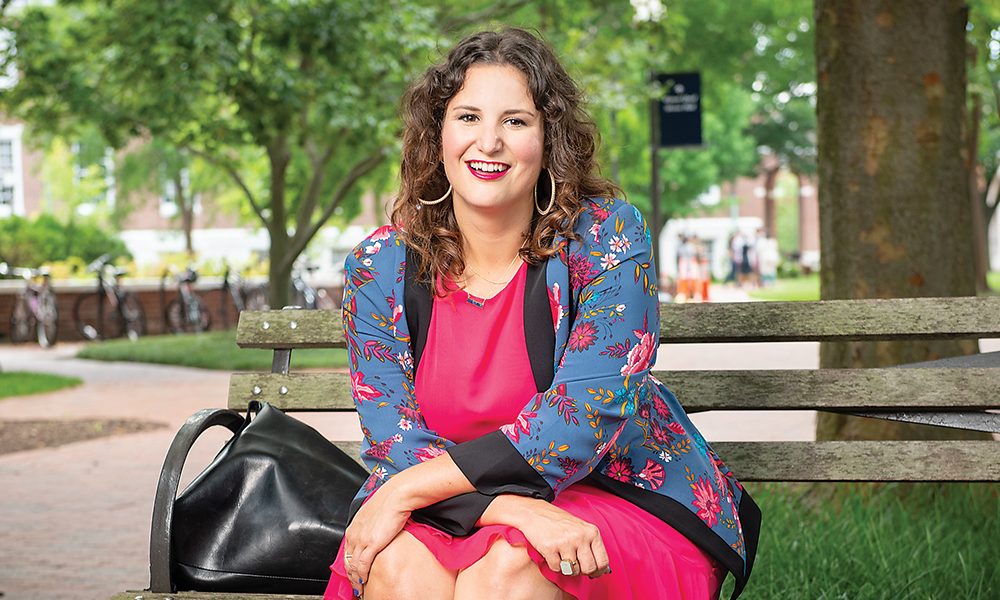Education & Family
Cameo: Kirsten Brinlee
Executive director of Baltimore Collegetown Network works to keep students in the city.
There are about 160,000 students enrolled in Baltimore-area colleges—but how well do they really know the city? That’s the question that Kirsten Brinlee, executive of Baltimore Collegetown Network (BCN), is constantly trying to answer. By working with 13 local colleges and universities, BCN tries to engage students with the city around them with the eventual goal of making them stay. We sat down with Brinlee to ask about her own college experience, what keeps people in Baltimore, and the project she’s most proud of.
How did service and leadership factor into your own college experience?
I went to the University of Oklahoma, and my college experience was so focused on campus. I was in a sorority. I helped plan homecoming and other big events on campus ,and I think part of that is because it was in a college town. I had taken this class called leadership theory and practice . . . that was kind of a turning point in helping me figure out what I wanted to do post graduation.
I knew that because I’d had such a great experience in my undergrad working with the university staff that I wanted a campus job, so I applied for this position. It was called the graduate assistant for the Center for Leadership and Service. So I worked there as a grad assistant while I was getting my master’s degree and got to create new programs. I created a big day of service. I created a leadership program largely because we were small, so we got to try and do a lot of things.
How did you end up doing this work in Baltimore?
I moved to Baltimore and worked at Johns Hopkins in their Center for Social Concern, which is a community engagement office that helps get college students engaged in the Baltimore community. My partner at the time did his residency at Hopkins, so we moved to initially for his position, but then I got the job like six weeks living in Baltimore. It’s such a big attractor; so many people are here because of Hopkins. I have a good friend who says you either move here for love or for Hopkins.
You work to retain Baltimore college students in the city. Why is it important to keep these students here?
Baltimore needs people, right? We have the opportunity to grow our city if we can retain college students that are attracted here. So we have 14 colleges and universities that are in the Baltimore Collegetown Network. We bring in 160,000 students, and if we could retain a portion of those students, it would do great things for Baltimore. It would help the city increase revenue, it would help provide services that can’t be provided in the tech space if we can get people to stay here after they graduate. Also, we’re training them.
So we’re giving these students and graduate students years of training and experience and we want them to apply it to Baltimore. If we can educate students about city issues and connect them with the people who are doing the work and then keep them here after they graduate, there’s no loss. It’s a continuous trajectory of positive.
What Collegetown Network program are you most proud of?
We know that if we can show students Baltimore, they’re more likely to stay, which is awesome. So out of feedback from our students, we developed the Collegetown Underground program, which is a four-day, immersive experience that is meant to highlight either the unseen or the more off-the-beaten-path aspects of Baltimore. We started doing the research for that program in 2015. Post Freddie Gray, students wanted to know about West Baltimore. They were like, ‘I’ve seen this on CNN, my campus is less than five miles from West Baltimore. Why don’t I know more about how this could have happened?’ So we did our first Collegetown Underground on West Baltimore, met with community leaders, and kind of got the history.
That was our first program that we did, and then the students wanted to see what was happening on the East Baltimore side. We did East Baltimore in 2017 and learned about the refugee and immigrant population down in Southeast Baltimore, learned about Hopkins and the medical campus and those community relations. And from that program, the students also wanted to look at the art and culture scene for the next one. So we kicked off 2018 with Underground Art and Soul. We got to meet with different artists, take tours of neighborhoods, the artist spaces. That’s my favorite program to work on, hands down.You can see what it’s like to live here. You can meet people who live here and who have done really creative and interesting things with their lives, and it makes you want to stay because you’re like, well I could do that, too.
What does success look like for you?
To get people to stay, but also at least to appreciate and understand Baltimore in a way that recognizes the complexity that Baltimore has. I want students to feel like they can belong here and that students who grew up here too, that are going into college here, I want them to have ownership of their city. One of the coolest things that happened with the West Baltimore program was that we had three students from West Baltimore participate in that because they were so proud of being from West Baltimore and they wanted other students to know that too.
The more community building and understanding what we can do around Baltimore and what makes it such a unique and special place, that’s success for me. And if they say I’ll stay after they graduate, that’s the best.
